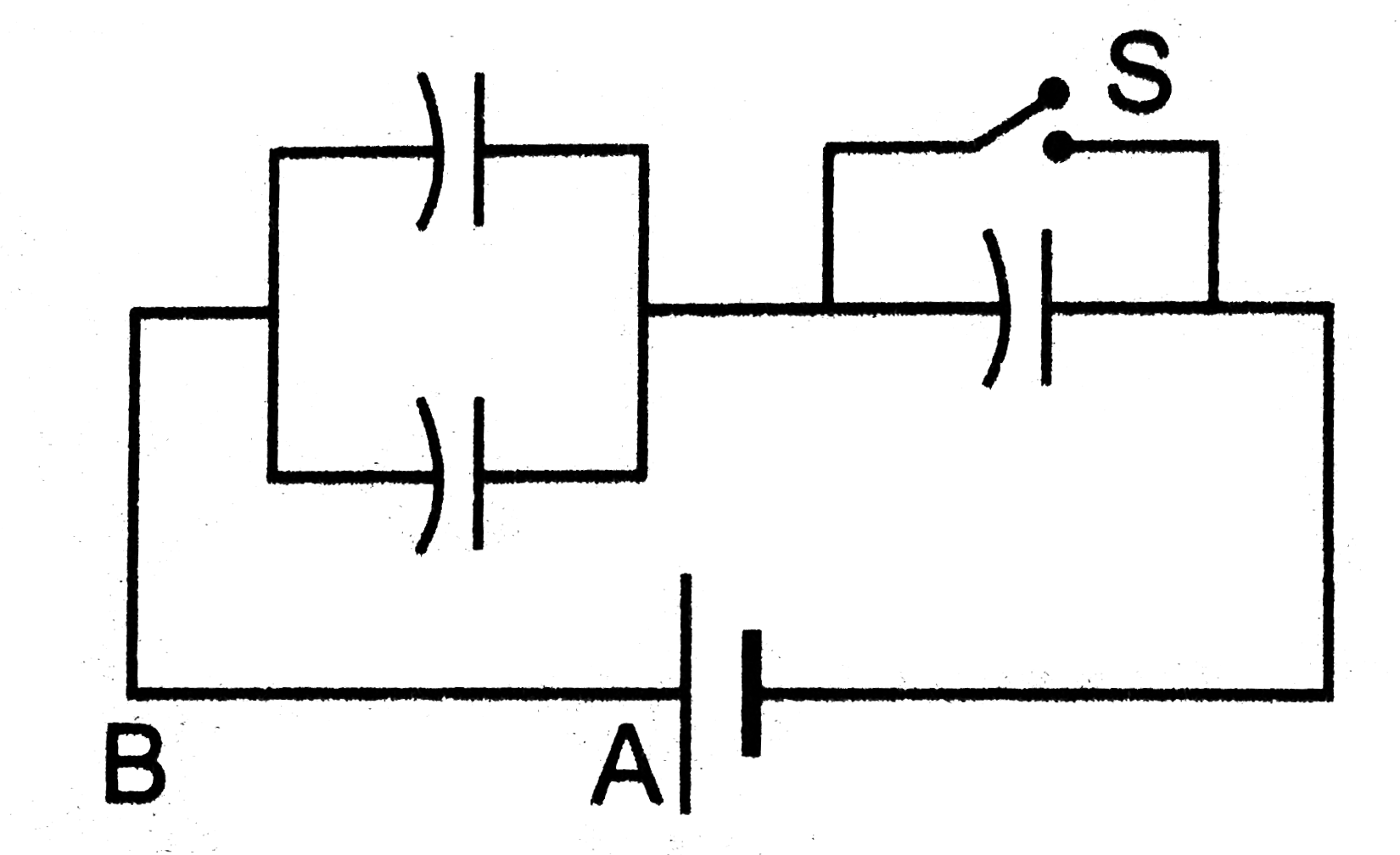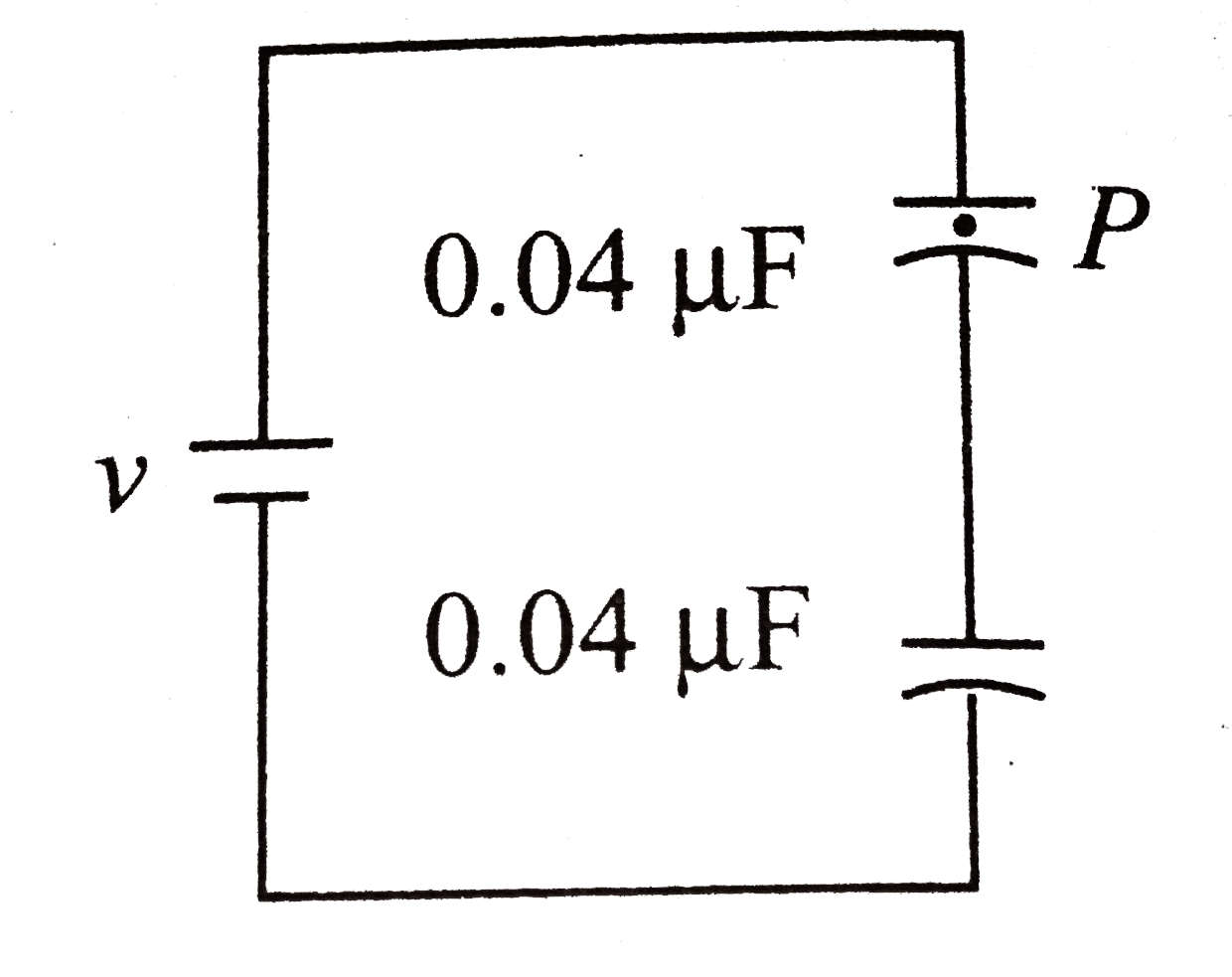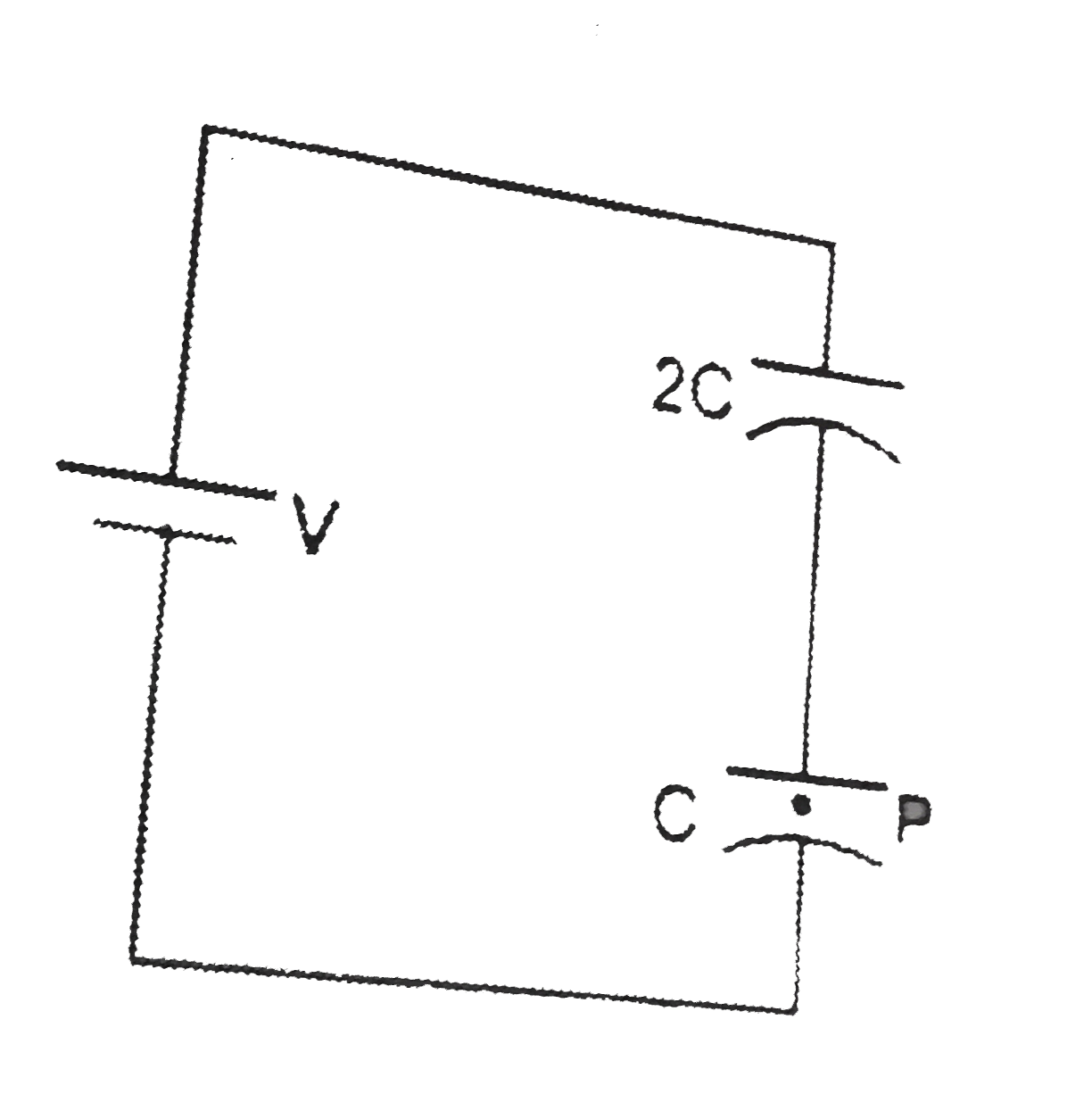The particle P shown has a mass of 10mg and a charge of −0.01μC. Each plate has a surface area

Electerical force is blanced by the weight of the mass
mg=qEE=e≤crtricfield
or mg=q.V.Ceplision0A
(:. Eplision_0 A / d = C :. 1 / d = C / eplision_0 A)<br>V=mgeplision0Aq.C
=10−6×9.8×8.88×10−12×100×10−410×10−8×0.04×10−6
V=43mV.
Topper's Solved these Questions
- CAPACITORSBOOK - HC VERMA ENGLISHCHAPTER - CAPACITORSEXERCISE - short answer
7 Videos
- CAPACITORSBOOK - HC VERMA ENGLISHCHAPTER - CAPACITORSEXERCISE - OBJECTIVE 2
6 Videos
- BOHR'S MODEL AND PHYSICS OF THE ATOMBOOK - HC VERMA ENGLISHCHAPTER - BOHR'S MODEL AND PHYSICS OF THE ATOMEXERCISE - Short Answer
10 Videos
- DISPERSION AND SPECTRABOOK - HC VERMA ENGLISHCHAPTER - DISPERSION AND SPECTRAEXERCISE - Question for short Answer
6 Videos
Similar Questions
The particle P shown has amass of 10mg and a charge of−0.01μC.Each plate has a surface area

View SolutionThe particle P shown in the figure has a mass of 10 mg and a charge of −0.01μC. Each plate has a surface area 10−2m2 on one side. What potential difference V should be applied to the combination to hold the particle P in equilibrium?

View Solution
Knowledge Check
The particle P shown in the figure has a mass of 10 mg and a charge of −0.01μC. Each plate has a surface area 10−2m2 on one side. What potential difference V should be applied to the combination to hold the particle P in equilibrium?
 A43mVB35mVC50mVD55mV
A43mVB35mVC50mVD55mVOne particle has a mass of 3.0×10−3kg and a charge of +8.00μC. A second particle has a mass of 6.0×10−3 kg and place and then released. The particles fly apart, and when the separation between them is 0.100 m, the speed of the 3.00×10−3 kg particle is 125 mis. Find the initial separation between the particles.
A6.63×10−2mB8.83×10−2mC2.06×10−2 mD1.41×10−2 mTwo particles each have a mass of 6.0×10−3 kg. One has a charge of +5.0×10−6 C. and the other has a charge of −5.0×10−6 C. They are initially held at rest at a distance of 0.80 m apart. Both are then released and accelerate toward each other. How fast is each particle moving when the separation between them is one-third its initial value?
A7.3 m/sB3.9 m/sC9.7 m/sD5.4 m/s
The particle P shown in the figure has a mass m and a charge -q. Each horizontal plate has a surface area A potential difference V=n(mgε0A2qc) should be applied to the combination to hold the particle p in equilibrium then find the value of n.

View SolutionThe particle P shown in the figure has a mass m and a charge -q. Each horizontal plate has a surface area A potential difference V=n(mgε0A2qc) should be applied to the combination to hold the particle p in equilibrium then find the value of n.

View SolutionA metal cube of length 0.1 is charged by 12μC. Calculate its surface charge density.
View SolutionParticle having a mass of 1.0 mg has a velocity of 3600 km/h. Calculate the wavelength of the particle.
View SolutionParticle having a mass of 1.0 mg has a velocity of 3600 km/h. Calculate the wavelength of the particle.
View Solution
